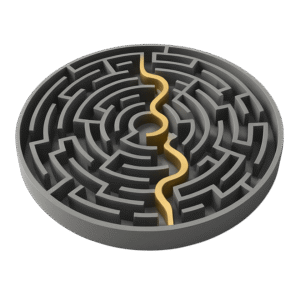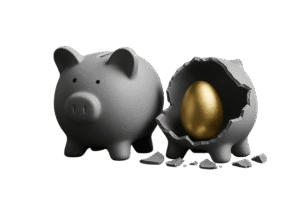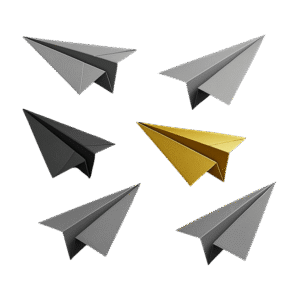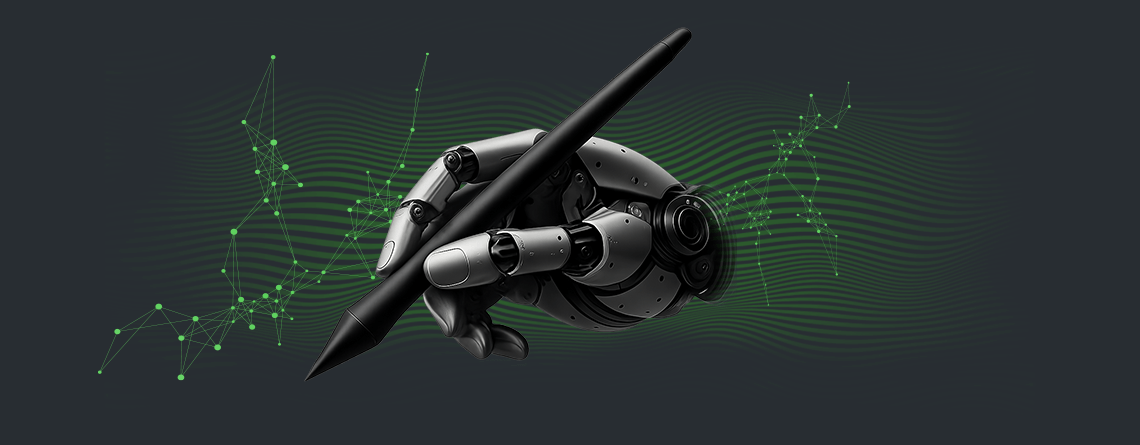Table of Contents
How Did Artificial Image Generation Get Here?
From Imagination to Realisation
Artificial Image Generation refers to the use of artificial intelligence to create visual content, often in the form of photographs, illustrations or concept art, without the direct involvement of a human artist. These tools rely on machine learning models trained on massive datasets of visual inputs to generate realistic, stylised or imaginative images based on textual or contextual prompts. While this technology may seem futuristic, its roots stretch back to speculative science fiction. As early as the mid-20th century, writers imagined machines that could create artistic masterpieces or construct visual narratives based on simple commands.
The transition from fiction to functionality began with rudimentary computer graphics in the 1960s and 1970s, growing into more sophisticated digital art tools in the 1980s and 1990s. It was not until the last decade, however, that AI-powered image generation was driven forward by advances in deep learning and neural networks. Tools like GANs (Generative Adversarial Networks) laid the groundwork for more refined platforms such as Midjourney, DALL•E and Adobe Firefly, which now allow even non-designers to create high-quality visuals with ease.
Much like other once-exclusive technologies, Artificial Image Generation has followed the inevitable arc of innovation: from elite to accessible. Initially reserved for research labs and tech corporations, this capability is now available to marketers, product designers, social media managers and entrepreneurs at the click of a button. As with the printing press, digital photography or video editing software, what began as specialist has become essential.
Is Artificial Image Generation Actually Graphic Design?
Blurred Lines
Graphic design has a long and distinguished history, beginning with the earliest forms of visual communication, from cave paintings to illuminated manuscripts, woodcut printing and eventually modern advertising. In the marketing world, graphic design became a cornerstone of brand identity and promotional storytelling. Designers translated business strategies into visual narratives, crafted logos that carried weight and emotion, and built packaging, posters and layouts that shaped consumer perceptions.
However, as businesses scaled, global markets expanded and digital platforms multiplied, traditional graphic design began to face limitations. Brand and product managers, CMOs and startup founders often found themselves caught between limited budgets, overworked design teams and the growing demand for personalised, localised and on-demand content. Turnaround times could be slow. Creative variations were constrained by time, cost and human bandwidth. Iteration cycles were lengthy and often required significant back-and-forth.
Artificial Image Generation addresses many of these pain points. It augments traditional design capabilities by introducing speed, scalability and creative freedom. What once took weeks can now be produced in hours or minutes. New campaign concepts can be visualised instantly, making A/B testing and iteration far more agile. Designers are no longer confined by what they can physically draw or photograph; the canvas is now limited only by imagination and ethical boundaries.
Does Artificial Image Generation Solve A Problem?
The Needs Addressed
At a macro level, businesses today are under pressure to create more content, faster, without compromising on quality or authenticity. The demand for consistent, creative and engaging visuals has outpaced the traditional capabilities of most design departments. Each of the following components of the overarching problem that Artificial Image Generation solves is rooted in systemic challenges that impact how brands connect with audiences.
1. Content Fatigue
 In the digital era, consumers are inundated with visual stimuli from countless platforms—social media, online advertising, emails, websites and apps. This overexposure leads to what psychologists call ‘content fatigue’, where audiences become desensitised and disengaged. The root cause lies in the volume of competition and the similarity of messages. Brands that rely on static or repetitive visual language are especially vulnerable to being ignored or forgotten. The impact is significant: lower engagement rates, reduced recall, and ultimately, diminished brand equity. To break through the noise, companies need to constantly refresh their visuals in ways that remain aligned with their identity yet feel novel and compelling to the viewer.
In the digital era, consumers are inundated with visual stimuli from countless platforms—social media, online advertising, emails, websites and apps. This overexposure leads to what psychologists call ‘content fatigue’, where audiences become desensitised and disengaged. The root cause lies in the volume of competition and the similarity of messages. Brands that rely on static or repetitive visual language are especially vulnerable to being ignored or forgotten. The impact is significant: lower engagement rates, reduced recall, and ultimately, diminished brand equity. To break through the noise, companies need to constantly refresh their visuals in ways that remain aligned with their identity yet feel novel and compelling to the viewer.
2. Budget Constraints
 Traditional design solutions such as professional photoshoots, illustration commissions and agency retainers are often prohibitively expensive for small to medium-sized enterprises (SMEs). Even larger organisations must justify every spend in the face of tightening marketing budgets and increasing demands for ROI. The root cause here is financial inflexibility and the high cost of specialised labour and production. Without sufficient budget, companies are forced to compromise on quality or volume, limiting their ability to scale campaigns or test different creative concepts. Artificial Image Generation offers an affordable alternative by reducing the need for extensive physical resources, location scouting or manual revisions, thereby democratising access to high-quality design.
Traditional design solutions such as professional photoshoots, illustration commissions and agency retainers are often prohibitively expensive for small to medium-sized enterprises (SMEs). Even larger organisations must justify every spend in the face of tightening marketing budgets and increasing demands for ROI. The root cause here is financial inflexibility and the high cost of specialised labour and production. Without sufficient budget, companies are forced to compromise on quality or volume, limiting their ability to scale campaigns or test different creative concepts. Artificial Image Generation offers an affordable alternative by reducing the need for extensive physical resources, location scouting or manual revisions, thereby democratising access to high-quality design.
3. Speed-to-Market
 We live in an always-on, digital-first environment, so timing is crucial. A trending meme, social issue or consumer insight can change in hours, not days. Brands that take too long to respond or launch campaigns miss out on critical windows of opportunity. The root of this issue is operational lag, meaning long approval chains, overbooked design teams, and production delays that slow content creation. This delay can reduce campaign effectiveness or lead to missed sales. With AI-powered image generation, concepts can be prototyped, iterated and finalised in real-time, allowing brands to respond to cultural moments with relevance and agility.
We live in an always-on, digital-first environment, so timing is crucial. A trending meme, social issue or consumer insight can change in hours, not days. Brands that take too long to respond or launch campaigns miss out on critical windows of opportunity. The root of this issue is operational lag, meaning long approval chains, overbooked design teams, and production delays that slow content creation. This delay can reduce campaign effectiveness or lead to missed sales. With AI-powered image generation, concepts can be prototyped, iterated and finalised in real-time, allowing brands to respond to cultural moments with relevance and agility.
4. Diverse Audience Demands
 As businesses expand into global and multicultural markets, there is growing pressure to localise visual content. This involves not just translation but adapting imagery to reflect regional aesthetics, cultural norms, and consumer behaviour. The complexity and scale of these demands place a heavy burden on creative teams already stretched thin. The root cause is both the logistical difficulty of local adaptation and the lack of localised creative talent across all markets. The impact is that global brands often default to generic visuals that lack resonance, weakening their ability to build deep emotional connections. Artificial Image Generation enables the rapid production of tailored visuals across different languages, cultures and demographics, improving inclusivity and relatability.
As businesses expand into global and multicultural markets, there is growing pressure to localise visual content. This involves not just translation but adapting imagery to reflect regional aesthetics, cultural norms, and consumer behaviour. The complexity and scale of these demands place a heavy burden on creative teams already stretched thin. The root cause is both the logistical difficulty of local adaptation and the lack of localised creative talent across all markets. The impact is that global brands often default to generic visuals that lack resonance, weakening their ability to build deep emotional connections. Artificial Image Generation enables the rapid production of tailored visuals across different languages, cultures and demographics, improving inclusivity and relatability.
5. Skills Scarcity

Perhaps the most practical limitation is the simple shortage of time, talent and tools. Skilled graphic designers, illustrators and visual storytellers are in high demand and often overextended. Recruitment and training take time, and small teams struggle to meet the dual demands of volume and strategy. This scarcity is rooted in both industry growth and a talent pipeline that has not scaled to match demand. When creative bandwidth is limited, marketing ideas are either delayed or diluted, reducing innovation and performance. Artificial Image Generation serves as a force multiplier, enabling design teams to maintain quality while expanding their output.
Each of these components underscores a modern truth: effective visual storytelling is no longer a luxury, but a necessity. Artificial Image Generation provides the scalability, accessibility and flexibility required to meet these challenges and drive future-forward marketing strategies.
How Can Marketers Use Artificial Image Generation?
Shifting Perspectives
Artificial Image Generation can be more than a design tool. It can build a bridge between creativity and capability, enabling brand and product managers to meet modern marketing challenges with greater agility. On a strategic level, it reshapes how businesses engage with their audiences, collaborate with creative partners and even conceive new ideas.
From business-to-business (B2B) campaigns to business-to-customer (B2C) outreach, AI-generated visuals increase flexibility. A SaaS company can use it to develop conceptual diagrams for investor presentations. A fashion brand can visualise seasonal collections without producing physical samples. A consumer goods startup can test multiple packaging designs simultaneously to gather audience feedback before committing to production.
Even interpersonal communication benefits. Personalised thank-you cards, automated social content and internal team updates can all be enriched through fast, context-aware visuals. For CMOs and founders, Artificial Image Generation offers a way to scale brand expression without scaling team size. It empowers experimentation and lowers the cost of failure, making it easier to pursue bold ideas.
Artificial Image Generation In Action
Walking the Walk: Real World Examples
Quickly becoming a mainstream creative tool, Artificial Image Generation is no longer the domain of experimental tech firms. It is being embraced by major brands across sectors to enhance efficiency, creativity, and audience engagement. Some of the most successful strategies can als0 be scaled down into budget-friendly approaches accessible to any brand and marketing managers, small business founders or entrepreneurs.
LVMH
This company uses synthetic models and AI-stylised photography to rapidly prototype fashion concepts and campaign moods across its luxury houses such as Louis Vuitton, Dior, and Fendi. These AI-generated visuals enable the design and marketing teams to simulate how garments will look in editorial and digital contexts before physical samples are made. The impact is both creative and operational—campaign concepts can be tested, refined, and aligned with brand aesthetics faster, reducing production lead time and associated costs.
Downsize It: use free or low-cost AI tools like Midjourney or Leonardo.Ai to create digital moodboards and outfit simulations, saving on early-stage photography and model casting fees.
BMW
With integrated in its online configurators, using AI-generated renderings of vehicle interiors and exteriors to allow users to visualise their ideal car in real-time. These hyperrealistic images replace or supplement traditional photography, allowing BMW to update visuals more frequently, align with seasonal marketing, and respond quickly to design changes. This approach boosts engagement and enhances the customer’s sense of agency and immersion.
Downsize It: smaller automotive businesses or dealerships can use tools like Adobe Firefly or Runway to generate lifestyle backdrops or colour variant visuals for their vehicles, enabling fast, custom content creation without reshoots.
Nike
This brand leverages Artificial Image Generation to create social media visuals that are hyper-localised for product drops. AI tools tailor campaign assets for different cultural contexts, styles, and regions, making global campaigns feel personal and native to each audience. This localisation has helped Nike boost engagement rates and deepen brand resonance across diverse markets.
Downsize It: use tools like Canva with AI image generation plugins or tools like DALL·E to adapt a core visual identity for different regions, languages, or demographics, making limited campaigns feel expansive.
Netflix
To test and create show thumbnails this streaming giant uses Artificial Image Generation. These AI-generated visuals are customised to reflect viewer preferences across different genres, geographies, and emotional tones, increasing click-through rates by matching imagery to user behaviour. The strategic use of AI-generated thumbnails is reported to significantly improve content discovery and retention.
Downsize It: independent video content creators or media platforms can use AI tools to create multiple thumbnail variations (via Clipdrop, Canva AI, etc.) and test them using low-cost A/B testing platforms or native analytics on YouTube and Vimeo.
Lush Cosmetics
Using a “test before you build” approach, applies Artificial Image Generation to prototype virtual product concepts and gauge customer interest on social media before physically producing limited editions. This has helped Lush reduce waste, improve product-market fit, and co-create with their audience in a meaningful way.
Downsize It: use Midjourney or similar tools to generate visuals of new scent lines, packaging or seasonal collections, and post them to social media for polling or comment-based feedback, enabling quick data-driven decision-making.
Airbnb
Generating aspirational travel visuals using Artificial Image Generation helps this company depict trending destinations, themed experiences, and dream holidays. These visuals, generated using current booking data and seasonality trends, are used across digital campaigns to spark wanderlust and increase platform engagement. AI also allows rapid adaptation for different audiences and cultural aesthetics.
Downsize It: use ChatGPT plus DALL·E or other image-generation tools to create visuals of custom travel packages or seasonal getaways, then test them via email marketing or organic social posts to see what content excites their audience most.
These real-world applications reveal how Artificial Image Generation is helping top brands reduce production cycles, localise storytelling, and make marketing more agile and responsive. But the exciting takeaway for marketers, brand managers, and SME owners is that many of these tactics can be replicated with free or low-cost tools and a bit of creative ingenuity.
Each of these companies demonstrates how Artificial Image Generation can be used not just for cost-saving but for creative agility and strategic storytelling. In doing so, they position themselves as forward-thinking, responsive and customer-centric.
Artificial Image Generation and Graphic Design
Where To Now?
Clearly Artificial Image Generation is not simply a nice-to-have feature of modern graphic design. It is a competitive advantage. And the democratisation of this technology is making visual storytelling more accessible than ever which allows any brand, no matter its size, to punch above its weight with imaginative, data-informed, and visually arresting content.
For brand and product managers, the ability to respond quickly to market signals, personalise communication at scale, and experiment without excessive cost is transformative. Campaigns are no longer confined to static timelines or single creative interpretations. They become living dialogues, shaped by real-time insights and audience interaction.
By reflecting the visual language of diverse cultures, responding to emerging trends and representing inclusive identities, these tools can help brands connect with more people more deeply and enhance authenticity when used responsibly. The key is intention: to use the technology not as a shortcut, but as a catalyst.
As the boundaries of design continue to expand, Artificial Image Generation offers not just efficiency but a new lens through which to reimagine creative possibility. For brand and product managers, this technology represents a chance to explore uncharted visual territories, to prototype with agility, and to engage audiences with content that is not only timely, but tailored and evocative.
Those who approach Artificial Image Generation with curiosity instead of cynicism will discover a powerful ally that can accelerate experimentation, reduce creative bottlenecks, and ignite bold, unexpected ideas. The future of marketing belongs to those who are willing to step beyond the conventional and embrace tools that challenge the status quo.
Ultimately, the role of Artificial Image Generation in graphic design is not about replacing human creativity, but about amplifying it. It calls on marketers to be courageous in rethinking how campaigns are conceived and delivered, and to trust that innovation often begins where comfort ends. By weaving this technology into their creative processes with intention and imagination, brand leaders can craft campaigns that don’t just meet expectations, but redefine them. In this new era, success will favour the brave: those who see change not as a threat, but as an invitation to evolve.
Updated: 22 August 2025


